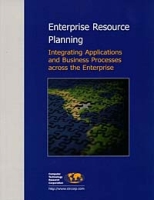| Enterprise Resource Planning: Integrating Applications and Business Processes Across the Enterprise артикул 12778d. |
 |
Enterprise resource planning (ERP) systems integrate the primary applications in an organization A typical ERP system provides applications for accounting and controlling, production and materials management, quality management and plant maintenance, sales and distribution, human resource management, and project management This new озмтщ report from CTR examines the benefits and drawbacks of implementing ERP systems Implementing ERP suites can improve and update corporate resource management, but the training and costs involved can be prohibitive Therefore, the report also provides a five-step plan for ERP implementation and explains how to calculate ERP return on investment (ROI) Topics Covered Include: What Is ERP? ERP: A Business Necessity ERP Philosophy and Functions Extended ERP Material Requirements Planning (MRP) Accounting Sales and Distribution Materials Management Tier One Vendors Mid-market Vendors Vendor Selection The Five Major Steps of ERP Implementation Designing a Business Blueprint Application Configuration Testing and End-user Acceptance Training Big Bang Versus Gradual Implementation ERP Benefits Achieving Year 2000 (Y2K)-compliant Systems Without Rewriting Code Shared Enterprise Data Consolidating Corporate Data Supply Chain Management (SCM) SCM Software Sales Force Automation (SFA) ERP Tools ERP Services ERP Challenges Outsourcing ERP High Implementation Costs Calculating ROI Business Process Reengineering (BPR). NoFrostISBN 1566070686. |